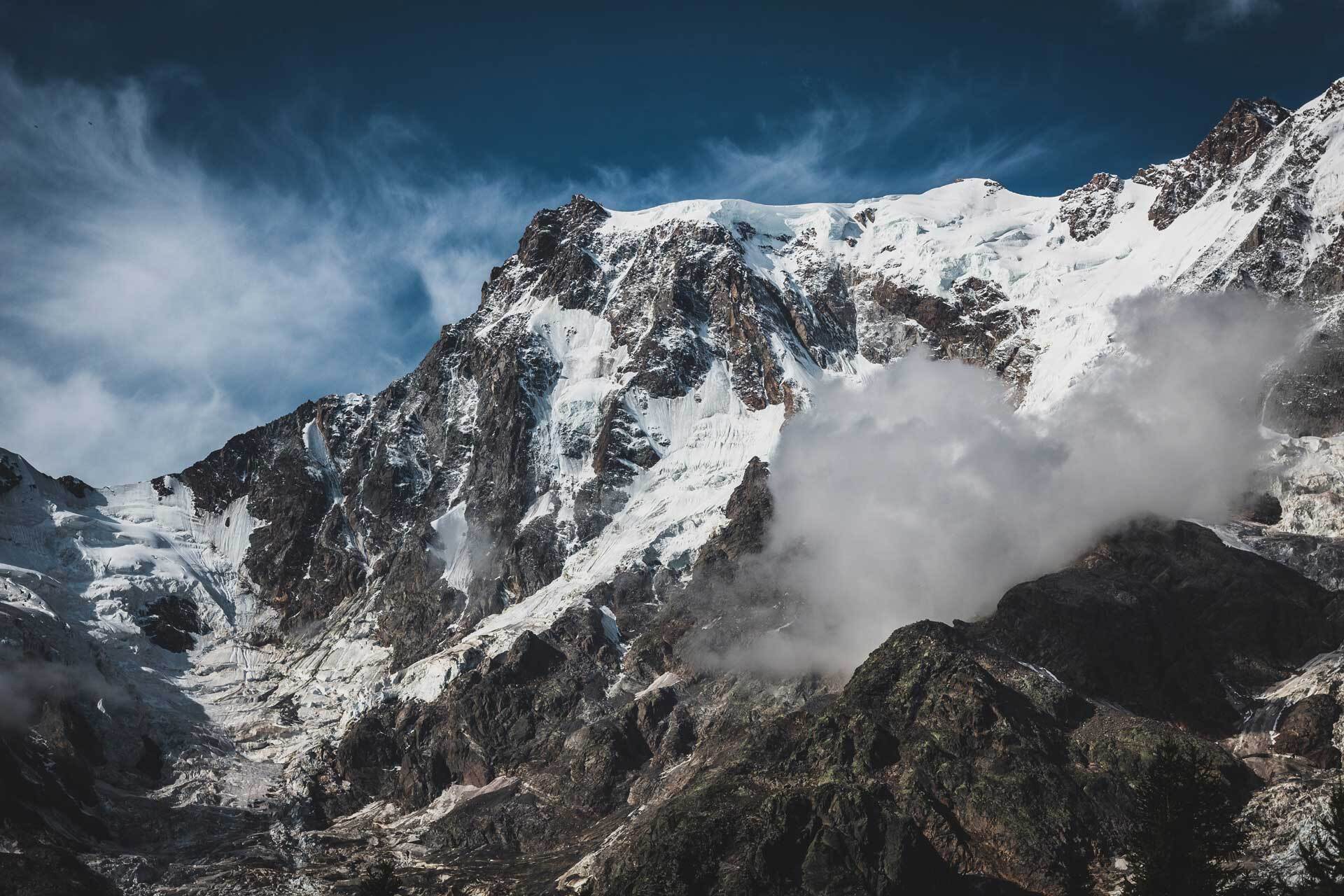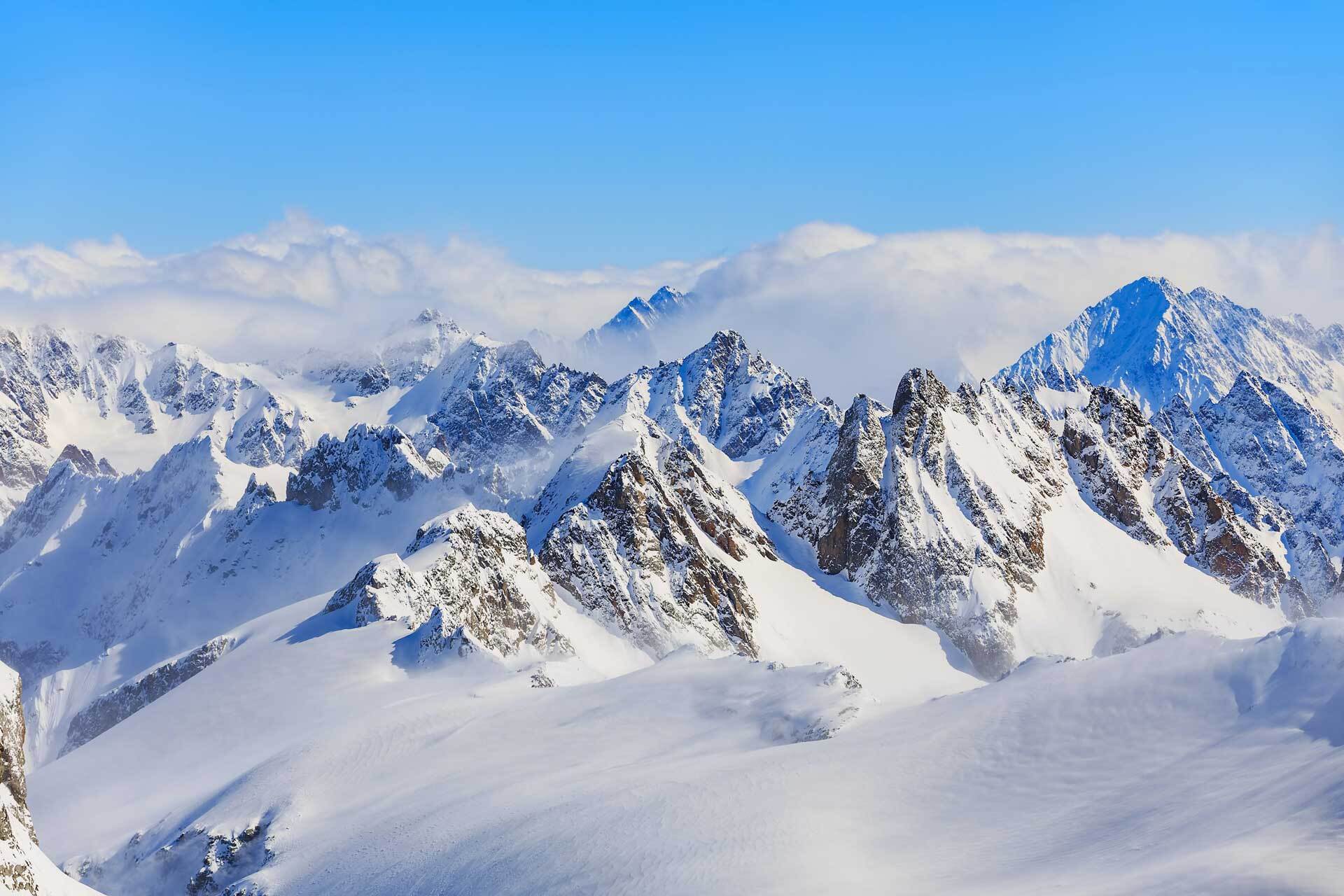Don’t be fooled by the chocolate-box towns, rolling green pastures, and comforting jangle of cowbells – Switzerland is home to some of the most unforgiving alpine landscapes anywhere on Earth. Sure, it may be smaller than neighbouring France, Italy, Austria, and Germany, but what it lacks in area size, Switzerland more than compensates for in mountains.
Many of the highest mountains in the Alps can be found on Swiss territory, not to mention some of the most iconic, visually imposing and downright dangerous. It’s often touted as the birthplace of modern mountaineering, attracting hundreds of the world’s top athletes every year, all hoping to bag a summit, ski a new line or climb an epic ice wall on one of the highest mountains in Switzerland.
So, what are those mountains? And just how high are they? Below, you’ll find the answers to these questions and more as we explore Switzerland’s ten loftiest peaks.
1. Monte Rosa (Dufourspitze), 4634m

Looming above the Swiss-Italian border, Monte Rosa is an impressive massif in the Pennine Alps made up of ten summits. The tallest summit is Dufoursprize, standing at a staggering 4,634m. It’s the highest point in Switzerland, and second-highest summit in the Alps after Mont Blanc, towering over neighbouring peaks like the Matterhorn and the Weisshorn.
The mountain was first summited in 1855 on an expedition led by Charles Hudson, and which had John Birbeck, Edward JW Stephenson, and brothers Johannes and James G Smyth on the team. Mountain guides Mattäus Zumtaugwald and Ulrich Lauener paved the way.
Back then, thin canvas tents were all that protected climbers from inclement alpine weather. Today, however, the Monte Rosa hut at the foot of the massif provides a modern refuge for mountaineers. Be warned though; getting there is a challenge in itself and requires traversing the ever-changing Gorner Glacier. Watch out for crevasses!









